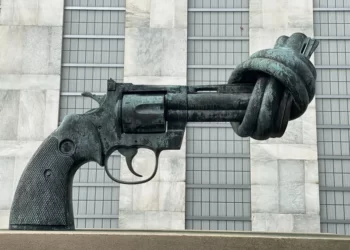In the field of sociology, the concept of “carceral organization” refers to a specific type of social institution or system that is centered around punishment, control, and confinement. This term is derived from the word “carceral,” which relates to prisons or places of incarceration.
Understanding Carceral Organization
Carceral organization can be observed in various contexts, including but not limited to prisons, detention centers, and other correctional facilities. However, it is important to note that the concept extends beyond physical spaces and can also be applied to organizations and institutions that adopt similar principles of surveillance, discipline, and punishment.
At its core, carceral organization is characterized by a hierarchical structure, where power is concentrated in the hands of authorities who exercise control over individuals who are deemed to have violated societal norms or laws. The primary objective of carceral organizations is to maintain order, deter crime, and rehabilitate offenders.
The Functions of Carceral Organization
Carceral organizations serve several functions within society. These functions can be broadly categorized into the following:
1. Punishment and Deterrence
One of the key functions of carceral organizations is to administer punishment to individuals who have committed offenses. This serves as a form of retribution and is intended to deter others from engaging in similar behavior. The severity of punishment may vary depending on the nature of the offense and the legal system in place.
2. Social Control
Carceral organizations play a crucial role in maintaining social control by monitoring and regulating the behavior of individuals within their jurisdiction. Through surveillance, strict rules, and disciplinary measures, these organizations aim to prevent further criminal activity and ensure compliance with societal norms.
3. Rehabilitation and Reintegration
Another important aspect of carceral organization is the focus on rehabilitating offenders and facilitating their reintegration into society. This involves providing educational programs, vocational training, counseling, and other support services aimed at addressing the underlying causes of criminal behavior and promoting positive change.
Critiques of Carceral Organization
While carceral organizations are designed with the intention of maintaining social order and reducing crime, they have also faced criticism from various perspectives. Some of the key critiques include:
1. Overreliance on Punishment
Critics argue that carceral organizations tend to prioritize punishment over rehabilitation, leading to high rates of recidivism. They argue that a more holistic approach that addresses the root causes of criminal behavior would be more effective in reducing crime in the long run.
2. Disproportionate Impact on Marginalized Communities
There is evidence to suggest that carceral organizations disproportionately affect marginalized communities, including racial and ethnic minorities, low-income individuals, and those with mental health issues. This has raised concerns about systemic inequality and the perpetuation of social divisions.
3. Alternatives to Incarceration
Advocates for criminal justice reform propose alternatives to traditional incarceration, such as restorative justice practices, community-based programs, and diversionary measures. These alternatives aim to address the underlying causes of crime and promote healing and reconciliation rather than solely focusing on punishment.
Conclusion
Carceral organization is a significant concept in sociology that examines the structures and functions of institutions centered around punishment, control, and confinement. While these organizations play a role in maintaining social order and deterring crime, they also face criticism for their overreliance on punishment and disproportionate impact on marginalized communities. As society continues to evolve, it is essential to critically evaluate and explore alternative approaches to criminal justice that prioritize rehabilitation, social reintegration, and the reduction of systemic inequalities.








